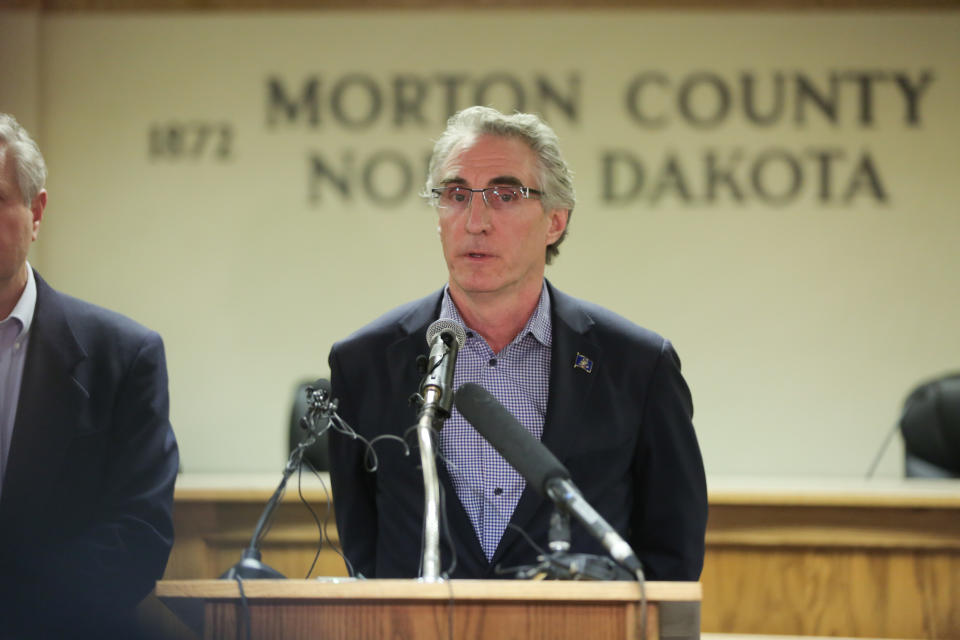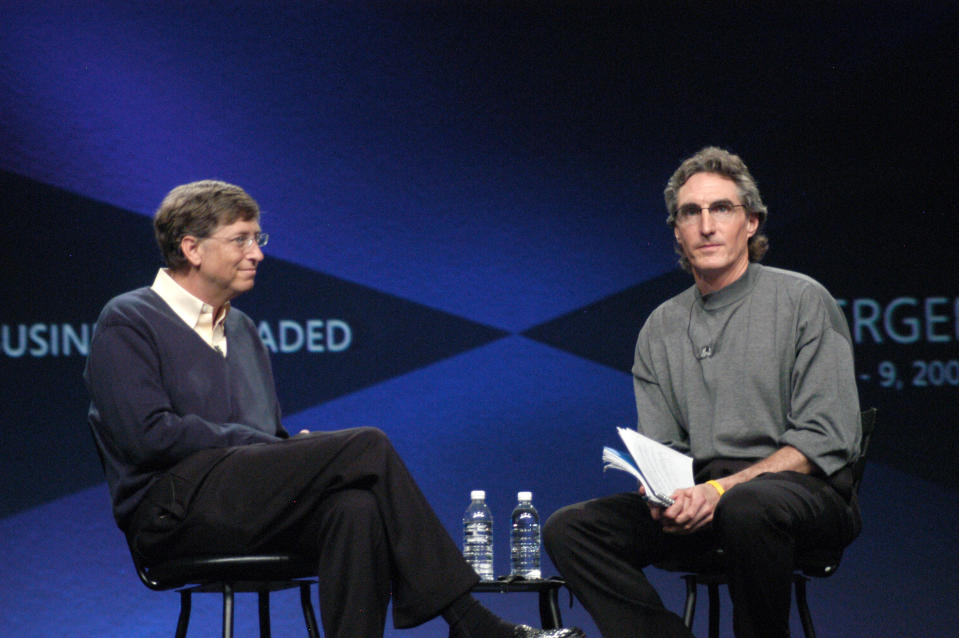'As essential as roads': How one of America's most rural states became a broadband leader
North Dakota is not generally where you’d expect to go looking for a billion-dollar software company.
But that’s exactly what Microsoft (MSFT) did back in 2001 when the company purchased Great Plains Software (headquartered in Fargo) for $1.1 billion.
In fact, North Dakota has fostered a tech sector thanks in part to being one of the most connected states in the country — a giant feat considering it’s also one of the most rural. “We realized that for us to be competitive, we had to have that connectivity,” says Doug Burgum, who was president of Great Plains when it was bought by Microsoft and is now governor of the state.
A 2018 report on broadband connectivity ranked North Dakota as the 18th most connected state in the country, just behind much more urbanized Illinois. Montana is North Dakota’s neighbor and came in dead last — 50th — in the report. 69% of Montanans have broadband access while 92% of North Dakotans can access high speed internet.
In the years since selling his company, Burgum entered politics. He was elected governor of North Dakota in 2016 and now he’s trying to extend the state’s lead in connectivity.

“We were called the crown jewel of the internet in the upper Midwest,” Burgum bragged in a recent interview with Yahoo Finance at the National Governor’s Association winter meeting in Washington D.C. Burgum added that pushing for more connectivity “is sort of a natural thing to just slip in now in the new role. To keep advocating for what we've been advocating for all along.”
The story of North Dakota’s internet success is both a lesson of how decisions can pay off decades later but also the deep-set challenges that many rural states face as they try to catch up, and then keep up, with the speed of technology.
How North Dakota got so connected
North Dakota’s connectivity goes back decades.
When you look at the different maps of fiber in the ground, North Dakota has a patchwork of lines criss-crossing the state. The contrast with neighboring Montana is clear.

Mike Saperstein is the VP of Strategic Initiatives & Partnerships at USTelecom, an industry group representing phone companies large and small, from Verizon (Yahoo Finance’s parent) to a range of smaller telecom providers across the country.
He notes that the greater concentration of fiber in places like North Dakota is thanks to “historical differences about how these rural areas, and the carriers that serve them, are supported by government.” These differences in support allowed local companies “to invest more heavily in fiber to the home solutions.”
The investment has paid off and today allows a range of companies to offer internet access across the Peace Garden State. One such local company is called MIDCO and offers high speed internet services to many rural areas thanks to the existing infrastructure as well as hundreds of millions of dollars in more recent investment.
“We just put out a challenge to everybody, to the private sector, to the government, federal state and whatever and we said, ‘Let's be the first state that gets a gigabit to everybody,’” says Burgum, adding that “we've had great participation from our rural telephone co-ops.”
Lessons for other rural states
Burgum currently serves as the chairman of the Western Governors association and a big part of his “Reimagining the Rural West” initiative is about rural broadband.
“There's no question that every governor in the Western part of the United States understands that connectivity in their rural areas is an essential building block,” Burgum says. “It's as essential as roads were or railroads were a hundred years ago.”
In states like Montana, the problems remain daunting and will likely be with the state for years to come. Governor Steve Bullock has touted advances in broadband access for schools but has also clashed with the Republican lawmakers over tax breaks to telecom companies that proponents say would create economic incentives for companies to lay fiber.
As a Democratic presidential candidate, Bullock proposed $61 billion in federal government funding to “ensure that every school, library, and hospital is connected within two years and every household is connected within three years.”
Washington D.C. has recently stepped in, but in a smaller way. Last year, the FCC announced a Rural Digital Opportunity Fund to devote $20.4 billion towards bringing “high speed fixed broadband service to rural homes and small businesses that lack it.”
Saperstein adds that “looking forward, the key for broadband deployment in any rural area is adequate funding to enable the broadband investment we want as a nation in otherwise harder to serve areas.”

Burgum, a Republican who likes to mention his small government bona-fides, also supports a greater role for Washington using the model of rural electrification and telephones from decades ago. “In the same way we needed to bring electricity and telephone connection to rural areas,” he says, “we've got to do that with broadband.”
Ben Werschkul is a producer for Yahoo Finance in Washington, DC.
Read more:
FCC commits $20.4 billion to help close the rural digital divide
Land O’Lakes CEO: Rural America is the new inner city
Presidential campaigns are paying millions to Big Tech companies (while also bashing them)
Read the latest financial and business news from Yahoo Finance
Follow Yahoo Finance on Twitter, Facebook, Instagram, Flipboard, LinkedIn, YouTube, and reddit.
